Another night bus, another story. Luckily this one is more of a non-story. Ishak had continually told me that Royal Express were the best company in Gujarat, and in a way he was right. It was more comfortable, warmer and generally more luxurious than the other three, but still I was dropped 12 kms from the centre of Gujarat when I arrived exhausted at 5.30am. I knew that the cafe the New Lucky, the one with the graves in the restaurant was open at this hour, so I headed there. I knew that Jagdesh would be coming around 8.00am so I made do with a long breakfast and watched the city wake up.
Jagdesh was the guide/homestay owner whom I met on the last day of my previous visit to Ahmedabad
. I had mentioned that I was having trouble getting an appointment for the Calico Museum. This is a museum that only accepts 15 people at a time and is by appointment only. Jagdesh succeeded where I had failed and I had returned for this appointment. Apparently I was not the only visitor as Prime Minister Modi was also back in his hometown and consequently all the city’s accommodation was fully booked. Luckily Jagdesh offered me his spare room in his house or his homestay.
When we met I must have looked awful, another sleepless bus journey, so he took me back to his home, saying “I should get a morning sleep, before the appointment”. He lived slap bang in the centre of the old city, not far from where I had stayed before and where the New Lucky was situated. Crammed into a 200 year old street, his two tier house was sandwiched in a narrow paved street. Strangely it reminded me of my time in the 80’s and 90’s in Shanghai with my friends in the Old French Quarter there
. Architecturally it was miles away, but the similarity was in the community. Lots of other families were sandwiched in this narrow street and everyone knew everyone. All the neighbours knew about Jagdesh’s homestay and therefore were familiar with foreigners being there and were also conscious of their safety. Even the dogs and the cattle in the street seemed more tolerant of my presence than usual. It was also clean.
Jagdesh’s house was two tier, with a downstairs communal area and wash facilities. There was also his bedroom in the back of the ground floor. Upstairs (on some of the narrowest I have ever climbed, my bedroom was in the back shared with the house shrine, and across a narrow landing was the brand spanking new kitchen with new stove, pots and pans on the wall and (typical Indian style) no seats. It was basic, but spotless.
It transpired that Jagdesh, a widower had been doing this homestay/guiding business for a good ten years
. He enjoyed meeting foreigners and showing them the “hidden secrets” of Ahmedabad and the rest of state if they wished. A devote Hindu he greatly misses his wife, who passed away about fifteen years ago. He had a close relationship with his sister who comes to the house regularly and prepares food for his guests. She was a very friendly and a great cook, especially with spicy food. Conscious that many guests don't like spicy food, she prepared a sort of diluted Gujarati menu, but when she knew I liked spicy food, the dishes she prepared were more authentic and superb. Eating on the floor is still something I don't really enjoy.
Jagdesh still works in his cousin’s shop near the New Lucky and he left to work when I arrived letting me sleep. After two hours dosing I felt no better, but knew my appointment with the museum was coming so got ready and walked to Jagdesh’s shop. All the neighbours said hello and the traders in the immediate area were also incredibly happy to see me and equally friendly. Free Chai and handshakes were proffered along the route.
Firstly I took Will and Natty’s recommendation and visited the Art Book centre near Ellisbridge. This was a treasure trove of a book store, with countless book on handicrafts from all over India. I was enthralled, and managed to find some great gems
. Later when I checked on the internet I found the prices here were surprisingly competitive and with freight offered, this will be somewhere which i can use on my return home. I did though treat myself to a book on block printing. Having decided I should learn about both handicrafts and Gandhi on this trip.
I arrived at the Calico and signed in. Within ten minutes another six foreign tourists had arrived plus two people from Mumbai and went inside to complete some more rigorous form filling duties.
The Calico Museum is undoubtedly a must visit museum in India and was termed “one of the finest museums in the world” by my Footprints guide. It is owned by a trust and located in a beautifully refurbished Haveli set in manicured botanical gardens. Its a calm retreat from the noisy, dirty world outside. Its free, but entrance is strictly by appointment only and includes a two hour guide around some of the collection. Restrictions on visitors are to provide a guided service and to ensure the exhibits are only exposed to artificial light for a short a time as possible
.
The handicraft exhibits date from the 17th century and are predominantly related to religious worship. There are amazingly old and intricate brocades, embroideries, silk saris, shawls and wall hangings amongst others. Highlights for me were the Patan Patola Silks, historic tie dye from Gujarat, parts of the old Havelis from Ahmedabad and the old Jain Manuscripts. There were also Tibetan arts, Buddhist arts, crafts from Kashmir, Orissa and Southern India. It was a lot to digest in the two hour tour and was fascinating. More so after my visits to Kutch to the contemporary work. This was excellent and well worth the wait.
Jagdesh and I had dinner in the kitchen that evening and I was asleep early. The next day we were up late - a welcome sleep in and off a stroll around Ahmedabad to view the old streets, havelis, people and the preparations for the Kite Festival, taking place the following week. This day turned out to be interesting, informative and great for photography. The old buildings of this city are certainly hidden away and Jagdesh knew where they were and got me into them as well. There were fabulous wood carvings both inside and outside of these 200-300 year old properties, and we took our time going around. Also the preparation work for the festival involved plenty of kite making and material dying. The material dying was taking place right in the middle of the streets usually on the pavements by people who were quite often from outside the state and arrived for months prior to the event to make these materials. Huge pots of dye, especially bright pink were liberally spread around and this was very photogenic. Everyone was excited about this coming festival, “its not a religious festival so everyone is excited and is the only festival in which the whole city can participate”.
Another great day, but it was soon time to organise my trip away and yet again it would involve a sleeper bus to Bhenswara in Rajasthan. This time the bus would be no Royal Express so I was concerned but Jagdesh helped me sort out the passage. On the final day I amused myself in the local community, being treated to more cups of Chai, invited into people’s heavily and trying to photograph more festival preparations. In the end at 10.00pm I bid farewell and left for the bus stop.
Calico Musuem, Festival Prep, Street Life
Tuesday, January 06, 2015
 Ahmedabad, Gujarat, India
Ahmedabad, Gujarat, India
Other Entries
-
79Waterfalls, Rain and Loud Peruvian Pop Music
Sep 2999 days prior Pedro Ruiz, Peruphoto_camera4videocam 0comment 0
Pedro Ruiz, Peruphoto_camera4videocam 0comment 0 -
80Hummingbirds, Orchids, Coffee and Stomach Bugs
Oct 0296 days prior Moyobamba, Peruphoto_camera5videocam 0comment 0
Moyobamba, Peruphoto_camera5videocam 0comment 0 -
81Battlefields, Zulus, 1879, Leaving South Africa
Oct 1880 days prior Dundee, South Africaphoto_camera4videocam 0comment 0
Dundee, South Africaphoto_camera4videocam 0comment 0 -
82Mr India, X Factor Naga style, Exotic Food
Nov 0661 days prior Mokokchung, Indiaphoto_camera5videocam 0comment 0
Mokokchung, Indiaphoto_camera5videocam 0comment 0 -
83Burma, Headhunters, Opium & Dust
Nov 0958 days prior Launghe, Myanmarphoto_camera4videocam 0comment 0
Launghe, Myanmarphoto_camera4videocam 0comment 0 -
84History, bad guesthouses, hills, Wakching
Nov 1453 days prior Mon, Indiaphoto_camera4videocam 0comment 0
Mon, Indiaphoto_camera4videocam 0comment 0 -
85Skulls, Fertility, Opium, Anghs, Warriors
Nov 1750 days prior Shengnya, Indiaphoto_camera5videocam 0comment 0
Shengnya, Indiaphoto_camera5videocam 0comment 0 -
86Elders, Changs, Culture, Families and Skulls
Nov 2245 days prior Tuensang, Indiaphoto_camera5videocam 0comment 0
Tuensang, Indiaphoto_camera5videocam 0comment 0 -
87Sangai Festival - Kang, Hockey/Wrestling, Polo etc
Nov 2839 days prior Imphal, Indiaphoto_camera5videocam 0comment 0
Imphal, Indiaphoto_camera5videocam 0comment 0 -
88Hornbill Festival, Loin Looms & Naga Culture
Dec 1027 days prior Kohima, Indiaphoto_camera10videocam 0comment 0
Kohima, Indiaphoto_camera10videocam 0comment 0 -
89Birds, Rubbish, Grasslands, Rubble, Tribes etc
Dec 1423 days prior Nakhatrana , Indiaphoto_camera5videocam 0comment 0
Nakhatrana , Indiaphoto_camera5videocam 0comment 0 -
90Embroidery, Rogan, Block Printing, Tribes
Dec 1720 days prior Bhuj, Indiaphoto_camera5videocam 0comment 0
Bhuj, Indiaphoto_camera5videocam 0comment 0 -
91Lions, Nitin, Bird Spotting, Sleeper Bus Part 1
Dec 2116 days prior Gir, Indiaphoto_camera6videocam 0comment 0
Gir, Indiaphoto_camera6videocam 0comment 0 -
92Island Life, Portuguese Colony, Christmas
Dec 2512 days prior Diu, Indiaphoto_camera4videocam 0comment 0
Diu, Indiaphoto_camera4videocam 0comment 0 -
93Restaurant Tombs, Mosques, Markets
Dec 289 days prior Ahmedabad, Indiaphoto_camera5videocam 0comment 0
Ahmedabad, Indiaphoto_camera5videocam 0comment 0 -
94Birds, NYE, Dhows, Feral Dogs, Shaves
Dec 316 days prior Mandvi, Indiaphoto_camera6videocam 0comment 0
Mandvi, Indiaphoto_camera6videocam 0comment 0 -
95Blue Moon, Salt Flats, Crafts
Jan 024 days prior Bhujodi, Indiaphoto_camera5videocam 0comment 0
Bhujodi, Indiaphoto_camera5videocam 0comment 0 -
96Calico Musuem, Festival Prep, Street Life
Jan 06 Ahmedabad, Indiaphoto_camera5videocam 0comment 0
Ahmedabad, Indiaphoto_camera5videocam 0comment 0 -
97Leopards, Shepherds, Turbans and Aristocrats
Jan 115 days later Bhenswara, Indiaphoto_camera5videocam 0comment 0
Bhenswara, Indiaphoto_camera5videocam 0comment 0 -
98Birds, Fog, Bad Internet, Old Friends
Jan 148 days later Jodhpur, Indiaphoto_camera7videocam 0comment 0
Jodhpur, Indiaphoto_camera7videocam 0comment 0 -
99Tigers Tigers Tigers Tigers and oh Tigers
Jan 1711 days later Sawai Madhopur, Indiaphoto_camera6videocam 0comment 0
Sawai Madhopur, Indiaphoto_camera6videocam 0comment 0 -
100Trains, Rodents, Rip offs, Delhi and Gentle
Jan 2519 days later Delhi, Indiaphoto_camera3videocam 0comment 0
Delhi, Indiaphoto_camera3videocam 0comment 0 -
101Sand, Masks, Forest Man, Monks & Bamboo
Feb 0227 days later Majuli, Indiaphoto_camera8videocam 0comment 0
Majuli, Indiaphoto_camera8videocam 0comment 0 -
102Julius, Gibbons, Park Fees, Tea & Gymkhana
Feb 0530 days later Jorhat, Indiaphoto_camera5videocam 0comment 0
Jorhat, Indiaphoto_camera5videocam 0comment 0 -
103Houseboats, Dolphins, Rain and Animal Planet
Feb 1035 days later Tinsukia, Indiaphoto_camera5videocam 0comment 0
Tinsukia, Indiaphoto_camera5videocam 0comment 0 -
104Tezu family home, TV Mike, Huts, Cows, River Wash
Feb 1439 days later Tezu, Indiaphoto_camera5videocam 0comment 0
Tezu, Indiaphoto_camera5videocam 0comment 0 -
105Sumos, Boulders, Oranges, Idu Mishmi
Feb 1742 days later Roing, Indiaphoto_camera5videocam 0comment 0
Roing, Indiaphoto_camera5videocam 0comment 0 -
106Motorbikes, Idu Mishmi, Hats, Illness, Scenary
Feb 1944 days later Anini, Indiaphoto_camera9videocam 0comment 0
Anini, Indiaphoto_camera9videocam 0comment 0 -
107Nyokum Yullo, Nishi people, ferries, chain dance
Feb 2247 days later Itanagar, Indiaphoto_camera5videocam 0comment 0
Itanagar, Indiaphoto_camera5videocam 0comment 0 -
108Paddies, Plugs, Tattoos, Weddings, Bamboo, Spirits
Feb 2449 days later Ziro, Indiaphoto_camera5videocam 0comment 0
Ziro, Indiaphoto_camera5videocam 0comment 0 -
109Post Office, Hari's Help, Tourist Apartheid
Mar 0154 days later Guwahati, Indiaphoto_camera3videocam 0comment 0
Guwahati, Indiaphoto_camera3videocam 0comment 0 -
110Hornbills, Eco Lodge, Birds, Elephants & Nameri NP
Mar 0356 days later Tezpur, Indiaphoto_camera5videocam 0comment 0
Tezpur, Indiaphoto_camera5videocam 0comment 0 -
111Plans Changing, Bus tyres, early closing museums
Mar 0861 days later Kohima, Indiaphoto_camera2videocam 0comment 0
Kohima, Indiaphoto_camera2videocam 0comment 0 -
112Wildlife, History, Bad Roads, Elephants & Dust
Mar 1366 days later Wokha, Indiaphoto_camera5videocam 0comment 0
Wokha, Indiaphoto_camera5videocam 0comment 0 -
113Wedding, More Dust, Shawls, Tensions and Sumi Food
Mar 2073 days later Zunheboto, Indiaphoto_camera3videocam 0comment 0
Zunheboto, Indiaphoto_camera3videocam 0comment 0 -
114Stones, Inventions, Old Friends and Shop 65
Mar 2477 days later Mokokchung, Indiaphoto_camera5videocam 0comment 0
Mokokchung, Indiaphoto_camera5videocam 0comment 0

 Ahmedabad, Gujarat, India
Ahmedabad, Gujarat, India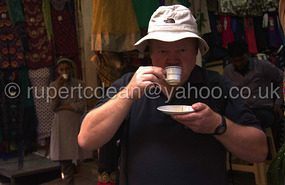
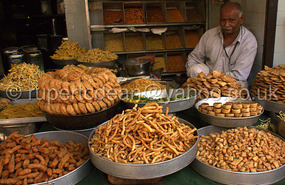
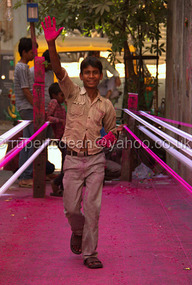
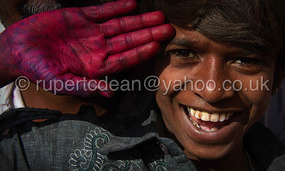
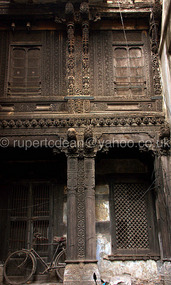




2025-05-22